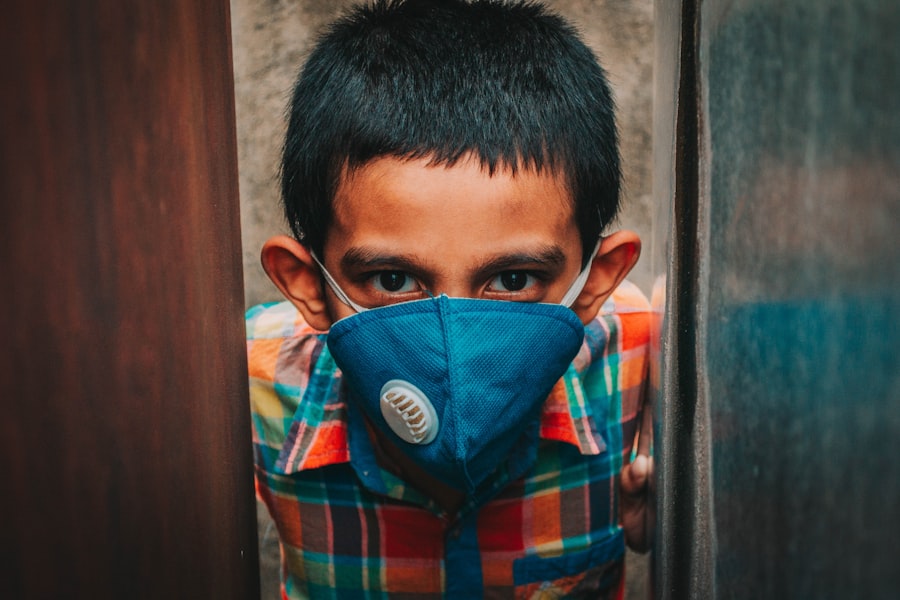Toxic behavior can manifest in various forms, often leaving emotional scars that linger long after the interaction has ended. You may find yourself in situations where someone’s actions or words consistently drain your energy, undermine your self-esteem, or create an atmosphere of discomfort. Understanding what constitutes toxic behavior is the first step toward protecting yourself from its detrimental effects.
Toxic individuals often prioritize their needs and desires over others, leading to a one-sided dynamic that can be exhausting and damaging. Recognizing toxic behavior is crucial for your mental and emotional well-being. It can range from overt hostility to subtle undermining tactics.
You might notice that certain people in your life consistently belittle your achievements or dismiss your feelings, making you question your worth. By identifying these patterns, you empower yourself to take action, whether that means confronting the behavior, distancing yourself, or seeking support from others who understand the impact of such interactions.
Key Takeaways
- Toxic behavior can manifest in various forms such as manipulation, gaslighting, passive-aggressive behavior, and narcissistic traits.
- Manipulative tactics may include guilt-tripping, playing the victim, or using charm to gain control over others.
- Gaslighting involves manipulating someone into questioning their own reality, leading to self-doubt and confusion.
- Passive-aggressive behavior is characterized by indirect resistance, stubbornness, and hostility.
- Narcissistic traits may include a sense of entitlement, lack of empathy, and a constant need for admiration and validation.
Recognizing Manipulative Tactics
Manipulation is a common trait among toxic individuals, and recognizing these tactics can help you navigate challenging relationships. You may encounter someone who uses guilt, fear, or obligation to control your actions and decisions. For instance, they might make you feel responsible for their happiness or well-being, creating a sense of indebtedness that can be difficult to shake off.
This emotional leverage can leave you feeling trapped and unsure of your own desires. Another manipulative tactic involves playing the victim. You might notice that when confronted about their behavior, a toxic person quickly shifts the focus onto themselves, portraying themselves as the wronged party.
This deflection can leave you feeling guilty for even bringing up your concerns. By understanding these manipulative strategies, you can better protect yourself from being drawn into their web of control and emotional turmoil.
Identifying Gaslighting

Gaslighting is a particularly insidious form of manipulation that can leave you questioning your reality. If you’ve ever felt like you’re losing your grip on what is true or doubting your perceptions, you may have experienced gaslighting. A toxic individual may deny events that occurred or twist facts to make you feel as though you’re overreacting or imagining things.
This constant undermining of your reality can lead to confusion and self-doubt. You might find yourself second-guessing your memories or feelings due to the persistent invalidation from a gaslighter. They may use phrases like “You’re too sensitive” or “That never happened” to dismiss your experiences.
Recognizing gaslighting is essential for reclaiming your sense of self and reality. By acknowledging these tactics, you can begin to assert your truth and seek validation from more supportive sources.
Spotting Passive-Aggressive Behavior
| Types of Passive-Aggressive Behavior | Examples |
|---|---|
| Non-Verbal Sarcasm | Rolling eyes, sighing heavily |
| Procrastination | Deliberately delaying tasks |
| Backhanded Compliments | Saying something positive with a negative undertone |
| Silent Treatment | Ignoring someone to express anger |
Passive-aggressive behavior is another hallmark of toxic interactions that can be challenging to identify. You may encounter individuals who express their anger or frustration indirectly rather than addressing issues openly. This could manifest as sarcasm, backhanded compliments, or silent treatment.
Such behaviors can create an atmosphere of tension and confusion, leaving you unsure of how to respond. When dealing with passive-aggressive individuals, you might feel as though you’re walking on eggshells, constantly trying to decipher their true feelings. This indirect communication style can lead to misunderstandings and unresolved conflicts.
By recognizing passive-aggressive behavior, you can approach these situations with clarity and assertiveness, encouraging more direct communication and fostering healthier interactions.
Understanding Narcissistic Traits
Narcissism is a personality trait characterized by an excessive need for admiration and a lack of empathy for others.
They often dominate conversations, redirecting attention back to themselves while showing little interest in your experiences or emotions.
You might notice that narcissistic individuals frequently seek validation and praise while being quick to criticize or belittle others. This imbalance can leave you feeling undervalued and unappreciated in their presence. Understanding these traits allows you to set realistic expectations for your interactions with narcissistic individuals and helps you recognize when it’s time to distance yourself from their toxic influence.
Recognizing Controlling Behavior

Controlling behavior is another red flag in toxic relationships that can manifest in various ways. You may find yourself in a situation where someone tries to dictate your choices, whether it’s about your career, friendships, or personal life.
You might notice that a controlling individual often justifies their behavior by claiming it’s for your own good or out of love. However, this rationale can mask deeper issues of manipulation and dominance. Recognizing controlling behavior is essential for reclaiming your autonomy and ensuring that your choices are respected.
By setting clear boundaries and asserting your independence, you can break free from the constraints imposed by controlling individuals.
Identifying Emotional Abuse
Emotional abuse is a form of toxicity that can be particularly damaging because it often goes unnoticed until significant harm has been done. You may find yourself in a relationship where insults, humiliation, or constant criticism become the norm. This type of abuse can erode your self-esteem and sense of self-worth over time, leaving you feeling trapped in a cycle of negativity.
Identifying emotional abuse requires vigilance and self-awareness. You might notice patterns of manipulation, isolation from friends and family, or a constant sense of walking on eggshells around the abuser. Recognizing these signs is crucial for breaking free from the cycle of emotional abuse and seeking help if needed.
Remember that no one deserves to be treated in a way that diminishes their worth or happiness.
Spotting Toxic Communication Patterns
Toxic communication patterns can significantly impact your relationships and overall well-being. You may find yourself engaged in conversations filled with blame, criticism, or defensiveness rather than open dialogue and understanding. These patterns often create an environment where healthy communication becomes nearly impossible, leading to misunderstandings and unresolved conflicts.
You might notice that toxic communication often involves shouting matches or silent treatments instead of constructive discussions. Recognizing these patterns allows you to take proactive steps toward healthier communication styles. By practicing active listening and expressing your feelings without blame, you can foster more positive interactions and create an environment where both parties feel heard and respected.
Understanding the Impact of Toxic Behavior
The impact of toxic behavior extends far beyond individual interactions; it can affect your mental health, relationships, and overall quality of life. You may experience increased stress, anxiety, or depression as a result of prolonged exposure to toxic individuals. The emotional toll can lead to feelings of isolation and helplessness as you navigate the complexities of these relationships.
Understanding the impact of toxic behavior is essential for prioritizing your well-being. You might find it helpful to reflect on how certain individuals make you feel and whether those feelings are conducive to a healthy life. By acknowledging the negative effects of toxic interactions, you empower yourself to make choices that promote healing and growth.
Setting Boundaries with Toxic Individuals
Setting boundaries is a vital skill when dealing with toxic individuals in your life. You may feel hesitant to establish limits due to fear of confrontation or potential backlash; however, boundaries are essential for protecting your emotional health. By clearly defining what behaviors are unacceptable to you, you create a framework for healthier interactions.
You might start by communicating your boundaries assertively but calmly, ensuring that the other person understands your needs without feeling attacked. For instance, if someone frequently interrupts you during conversations, you could express that you need them to listen fully before responding. Setting boundaries not only helps you reclaim your space but also encourages others to respect your needs.
Seeking Support and Resources
Navigating relationships with toxic individuals can be incredibly challenging, which is why seeking support is crucial for your well-being. You may find comfort in talking to friends or family members who understand what you’re going through or seeking professional help through therapy or counseling. These resources can provide valuable insights and coping strategies as you work through the complexities of toxic relationships.
Additionally, there are numerous books, online forums, and support groups dedicated to helping individuals recognize and address toxic behavior in their lives. Engaging with these resources can empower you with knowledge and tools to navigate difficult situations more effectively. Remember that seeking support is not a sign of weakness; it’s an essential step toward healing and reclaiming your life from toxicity.
In conclusion, understanding toxic behavior is vital for maintaining healthy relationships and protecting your emotional well-being. By recognizing manipulative tactics, gaslighting, passive-aggressive behavior, narcissistic traits, controlling actions, emotional abuse, toxic communication patterns, and their overall impact on your life, you equip yourself with the knowledge needed to set boundaries effectively. Seeking support from friends, family, or professionals further enhances your ability to navigate these challenging dynamics while prioritizing your mental health and happiness.
Identifying toxic behavior is crucial for maintaining healthy relationships and personal well-being. Toxic behavior can manifest in various forms, such as manipulation, constant criticism, or passive-aggressive actions, and recognizing these signs early can help in addressing and mitigating their impact. For a deeper understanding of how to identify and deal with toxic behavior, you can explore this insightful article on the topic: Unplugged Psych’s Guide to Identifying Toxic Behavior. This resource provides valuable tips and strategies to help you navigate and manage such challenging interactions effectively.
WATCH THIS! 🧠 The 11 Manipulation Tactics That Trap Smart People
FAQs
What is toxic behavior?
Toxic behavior refers to actions or attitudes that are harmful, negative, or detrimental to the well-being of others. This can include behaviors such as manipulation, control, aggression, and disrespect.
How can you identify toxic behavior?
Toxic behavior can be identified through patterns of negative interactions, such as constant criticism, manipulation, gaslighting, and a lack of respect for boundaries. It can also be recognized through the impact it has on your mental and emotional well-being.
What are some common signs of toxic behavior?
Common signs of toxic behavior include constant criticism, manipulation, gaslighting, controlling behavior, lack of empathy, and a disregard for boundaries. These behaviors can lead to feelings of anxiety, low self-esteem, and emotional distress.
How can toxic behavior affect your mental health?
Experiencing toxic behavior can have a significant impact on your mental health, leading to feelings of anxiety, depression, low self-esteem, and emotional distress. It can also contribute to a sense of powerlessness and a loss of self-worth.
What are some strategies for dealing with toxic behavior?
Strategies for dealing with toxic behavior include setting boundaries, seeking support from trusted individuals, practicing self-care, and considering professional help if the behavior is causing significant distress. It may also involve distancing yourself from the toxic individual or seeking to address the behavior through open communication.




